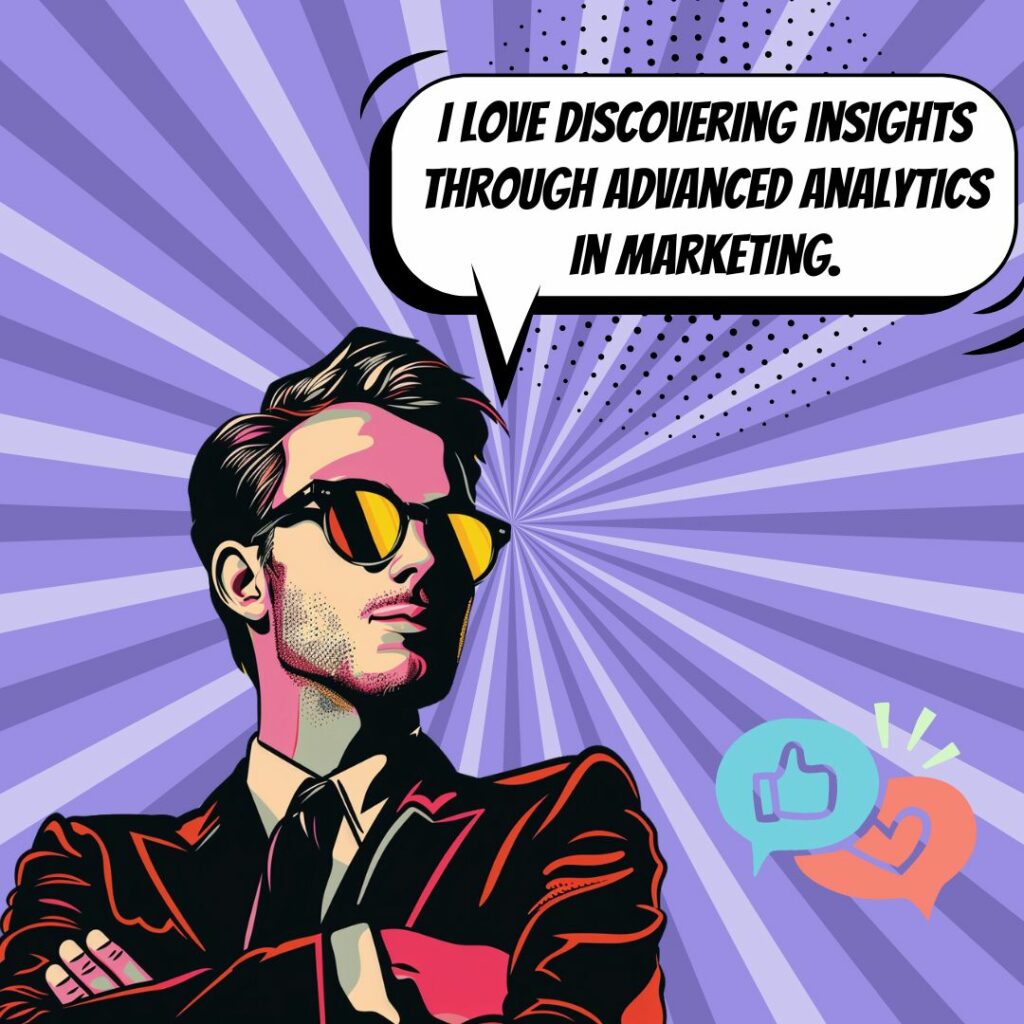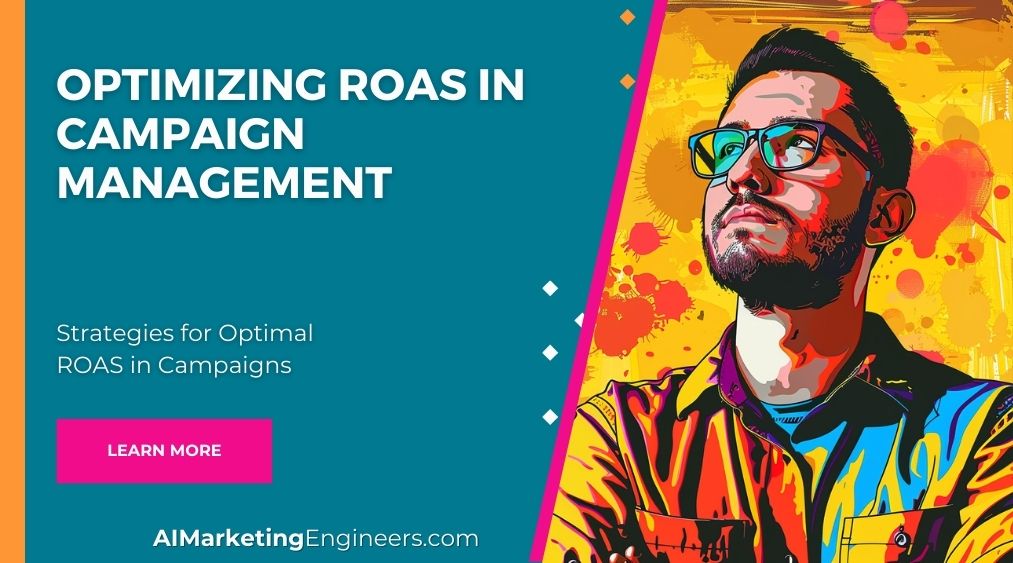Key Takeaways
✅ Predictive Analytics: Harness historical data to predict the future and stay a step ahead! Did you know that companies utilizing predictive analytics can improve campaign response rates by up to 20%? Learn how this can turbocharge your marketing strategies.
✅ Cluster Analysis: Imagine having a crystal ball for customer behavior. Through cluster analysis, tailor your marketing to each unique segment effectively. Businesses using this approach see up to a 30% increase in marketing efficiency. Get the scoop on how to apply it!
✅ Natural Language Processing (NLP): Unlock the hidden messages in customer feedback. Use NLP to improve customer experience as businesses that prioritize this see a 50% increase in customer loyalty. Dive into the methods that will give your marketing a voice.

Introduction
Ever wondered how the smartest marketers seem to magically know what their customers want next? It’s not a superpower; it’s advanced analytics techniques! Now, more than ever, the ability to sift through mountains of data and pull out golden nuggets of insight is what sets winners apart in the marketing race.
From predicting your customer’s next move with predictive analytics to making sense of the chatter on social media through natural language processing (NLP), the world of marketing is getting a sharp, data-driven makeover.
The article ahead unveils not just the ‘whats’ and ‘whys’ but the ‘hows’ of modern analytics in marketing. We’ll explore real-world examples where companies turned data into dollars and how you can do the same. Intrigued? You should be! Because beyond these words lies the key to unlocking marketing strategies that could redefine your brand’s success. Stay tuned for insights that could skyrocket your revenue, optimize your ROAS, and bolster your ROI. It’s not just about data; it’s about smart data—and you’re about to become an expert. Let’s dive in!
Top Statistics
| Statistic | Insight |
|---|---|
| Predictive Analytics Usage: 69% of companies are using it in their marketing strategies. (Source: Forrester’s Predictions 2021) | Predictive analytics isn’t just a buzzword; it’s being actively integrated by the majority. As it turns out, understanding future trends is crucial to staying ahead of the curve. |
| Machine Learning in Marketing: 49% of businesses use it, with 55% increasing investment. (Source: Forbes Insights and Quantcast report, 2020) | Machine learning isn’t just for tech gurus. Marketers are getting on board, and they’re ready to up their game and their budgets. Can you imagine the possibilities with your campaigns? |
| Impact of AI on Marketing: 61% of marketers view AI as a game-changer within five years. (Source: Adobe’s Digital Trends Report, 2020) | Artificial intelligence is like the new member on the team who works 24/7 – it’s destined to make waves. Are you prepared for the AI revolution in marketing? |
| Utilization of Big Data Analytics: 53% of marketers harnessing it for strategy improvement. (Source: NewVantage Partners’ Big Data and AI Executive Survey, 2020) | It seems that looking at the big picture (literally, big data) helps fine-tune the details. Are you tapping into your data goldmine effectively? |
| Relevance of Social Media Analytics: 85% of marketers can’t do without it. (Source: Hootsuite’s Social Media Trends 2021) | In the social media jungle, analytics are your compass. Do you know where your compass is leading you? |
Understanding the Role of Advanced Analytics in Marketing
Have you ever wondered how businesses seem to know exactly what their customers need, almost before the customers do? That’s where advanced analytics comes in. It’s like having a crystal ball, but one that’s powered by data instead of magic. Marketers rely on this to make smarter choices, thanks to a deep dive into customer data. How do they do this? By turning numbers and information into stories about what customers want and how they behave. And it’s not just about looking at past actions, it’s about predicting the future too. These advanced tools forecast what might happen next and help businesses get ready for it.
The Forecasting Power of Predictive Analytics
Imagine having a time machine that can tell you what your customers will want next month. Predictive analytics is kind of like that, but for businesses. Using historical data, it forecasts future outcomes with amazing accuracy. For instance, if a company can predict when a customer might stop buying (that’s called customer churn), they can take steps to keep them around. It’s not about guessing; it’s about using statistics to make educated predictions for things like how many items will sell and when.
The People-Puzzle Solving Cluster Analysis
When you walk into a room full of strangers, you naturally group people based on something common, right? Cluster analysis works similarly but in the customer world. This technique groups customers or products based on shared characteristics. Want to know who’s likely to buy eco-friendly products or who prefers buying online? Cluster analysis helps find those patterns so that businesses can send the right messages to the right people, making marketing feel more like a personal conversation rather than a shout in the crowd.
Decoding the Impact with Marketing Mix Modeling
It’s easy to spend money on advertising, but knowing where to spend it for the best return? That’s where marketing mix modeling shines. Businesses use this to figure out how each marketing channel, like billboards or online ads, affects sales and profits. It’s a balancing act — finding just the right amount to invest in each channel. It’s about understanding and quantifying the power of your marketing moves.
Evaluating Touchpoints with Attribution Modeling
Think about the last time you bought something online. You probably interacted with a series of ads or emails before making the purchase. Attribution modeling plays the detective, tracking down which of those touchpoints actually led you to buy. It’s assigning credit where credit’s due across different channels, helping marketers to realize, for example, whether it’s the Instagram ad or the killer review that’s converting browsers into buyers.
Smarter Decisions with Neural Networks and Machine Learning
Artificial intelligence isn’t just for sci-fi movies; it’s here, helping marketers make smarter decisions. Neural networks and machine learning look at data patterns to predict what customers will do next. They help companies get personal, crafting individual customer experiences. Whether that’s knowing the perfect time to drop a discount offer or suggesting a product a customer can’t resist, it’s about fine-tuning the approach to match what the data tells us.
Peering into the Future of Marketing Analytics
How will the next big thing in technology shape the way we do marketing? New tools and trends are always on the horizon, and staying ahead means watching where these technologies lead. Marketers must keep their fingers on the pulse of the industry, embracing the latest in analytics to continue telling those data-driven stories that resonate deeply with consumers.
By weaving together smart analytics practices, businesses can better connect with customers, offering them the products and services they desire at just the right moment. This synthesis of technology and human insight is what turns a good marketing strategy into a great one.
AI Marketing Engineers Recommendation
Recommendation 1: Utilize Predictive Analytics for Personalized Marketing Campaigns: Dig into your customer data with predictive analytics. This isn’t just fancy number-crunching; it’s about getting to know what your customers might want even before they do. By analyzing their past behaviors, you can predict future needs and create marketing campaigns that speak directly to them. Imagine being able to send a special offer for snow boots to someone who just searched for ski holidays—that’s the power of predictive analytics!
Recommendation 2: Leverage Customer Segmentation Through Cluster Analysis: Don’t treat all your customers like they’re cut from the same cloth. Utilize cluster analysis to group them based on similarities in their purchasing behavior, demographics, or even feedback. By identifying these unique groups—or clusters—you can tailor your messaging to each segment. Are families responding better to your weekend sale ads? Or maybe the young professionals light up your social media with engagement outside regular work hours? Use these insights to target more effectively.
Recommendation 3: Adopt Machine Learning Tools for Optimizing Ad Spend: In the world of pay-per-click and digital adverts, every penny counts. So, how about a tool that makes those pennies work smarter? Machine learning tools can automatically adjust your bids, test ad copy, and optimize your budget allocation for the best return on investment. They learn from what’s working and pivot from what’s not, in real time. It’s like having a super-smart assistant who’s always looking for ways to save you money and bump up your profits.
Relevant Links
Maximize Your Affiliate Marketing Potential!
Unlock the secrets to earning passive income through affiliate marketing with our expert guide. Excel in the field as we unveil the latest strategies for 2024.
ChatGPT: Your Marketing Edge for Creative Content
Discover the modern marketer’s tool for crafting compelling content. Learn how ChatGPT can revolutionize your content creation process.
The Future Unveiled: Top Digital Marketing Trends for 2024
Stay ahead of the curve with insights into the top digital marketing trends set to shape the industry in 2024, from AI-driven personalization to sustainability in branding.
AI in Marketing: Navigating Ethics and Strategy
Explore the ethical considerations and strategic challenges posed by the use of AI in marketing, and learn how to navigate these complexities for responsible implementation.
Harnessing Predictive Analytics for Data-Driven Strategy
Dive deep into how AI-powered predictive analytics are reshaping marketing strategies, enabling businesses to anticipate customer behaviors and market trends.
Conclusion
So, we’ve been on quite the journey together, peeking into the toolbox of modern marketers—advanced analytics techniques that are transforming the game. They’re peering into the future, clustering chaos into clarity, and mapping out the value of each message we send. But let’s pause for a moment and consider, why does all this matter?
Well, imagine you could predict your customer’s next move, understand the whispers of your data to fine-tune your next campaign, or see through the fog of ad spend to find what really jazzes up your ROI. That’s the power of advanced analytics in marketing; it’s like having a crystal ball, but one that’s all fired up by stats and machine learning.
Predictive analytics might have you nodding at patterns in customer behaviors, anticipating their needs before they even click. Cluster analysis can help you spot the shared traits among your customers, giving you the ‘aha!’ moments for truly personalized experiences. Remember those attribution models? They’re the unsung heroes confirming which dialogs in your customer’s journey really make them tick.
So, as we close this chapter, ask yourself: are you ready to embrace these tools and craft marketing stories that resonate with precision and heart? Because in a world where the only constant is change, advanced analytics could very well be your trusty compass through the shifting landscape of customer desires and industry trends.
FAQs
Question 1: What are advanced analytics techniques in marketing?
Answer: Advanced analytics techniques in marketing are the special secret ingredients that help savvy marketers uncover the gold nuggets hidden within mountains of data. They use smart formulas, learn from patterns, and crunch the numbers to figure out what makes customers tick and how to give them what they want before they even know they want it.
Question 2: What are some common advanced analytics techniques used in marketing?
Answer: Let’s talk about the tools of the trade! Marketers have a treasure chest of techniques like predicting the future with predictive analytics, putting customers into groups (cluster analysis), drawing lines between dots with regression analysis, teaching computers to make smart guesses (neural networks and machine learning), and getting the gist of what people are typing out (NLP and sentiment analysis).
Question 3: How can predictive analytics be used in marketing?
Answer: Think of predictive analytics as a crystal ball for marketers. It helps them foresee which customers might leave, who’s likely to buy, and how much someone might spend over time. Knowledge like this can turn an ordinary campaign into a personal invitation to customers that feels just right.
Question 4: What is the role of cluster analysis in marketing?
Answer: Cluster analysis is like throwing a party and making sure everyone finds their perfect group to mingle with. Marketers use it to discover who’s who in their customer base, plan parties (marketing campaigns) tailored to each cluster, and make sure everyone has a great time (customer experience).
Question 5: How can regression analysis be applied in marketing?
Answer: Regression analysis is all about connecting the dots. It helps marketers understand how one thing, like how much they spend on ads, affects another, like sales or customer happiness. With this insight, they can make smarter decisions, like where to put their money for the best return.
Question 6: What are the benefits of using machine learning in marketing?
Answer: Machine learning is like having a super-smart assistant who never gets tired. It helps marketers sort through heaps of data, spot the patterns humans might miss, and tailor their strategies to be as personal as your favorite barista’s coffee recommendations.
Question 7: How can natural language processing be used in marketing?
Answer: Natural language processing lets marketers tune into the chatter of the digital world. It’s all about understanding customer emails, social media, and reviews, giving companies the superpower to speak their customers’ language and build stronger bonds.
Question 8: What is the importance of sentiment analysis in marketing?
Answer: Sentiment analysis lets brands read between the lines of what customers are saying – it’s like understanding the mood music in the background. This way, they can do a happy dance when things are great or make tweaks when the tune sounds off-key.
Question 9: How can marketers get started with advanced analytics techniques?
Answer: For marketers eager to dive into advanced analytics, it’s all about setting clear goals, gathering the right data like squirrels with acorns, investing in neat tools, fostering a team that loves numbers, and partnering up with data whizzes to make marketing magic happen.
Question 10: What are some best practices for using advanced analytics in marketing?
Answer: To really nail advanced analytics in marketing, focus on insights that can make a tangible difference, keep refining your models like a chef perfects his recipes, translate data into stories everyone can understand, protect your data like it’s the crown jewels, and always keep an eye on the shifting seas of customer needs and industry changes.
Academic References
- Pauwels, K. (2018). Big Data and Analytics for Marketing. SAGE Publications. This comprehensive book dives into the big world of big data and analytics within the marketing industry. It reveals how understanding your customers through data can lead to personalized experiences, smarter decisions, and ultimately, better business outcomes. On top of all that, it talks about making sense of numbers to predict what might come next and what we should do about it.
- Venkatesan, R., & Farris, P. (2015). Advanced analytics in marketing. Journal of Marketing Analytics, 3(1), 1-12. Have you ever wondered how companies figure out exactly what you like or what you might need next? This article peers into how analytics can pinpoint who to talk to, what to say, and how to keep customers coming back for more. It’s all about treating different customers differently and doing it in a really smart way, using models and machines to learn from patterns.
- Dhar, R., Sheth, J. N., & Chintagunta, P. K. (2018). Big Data and Analytics for Marketing: A Review and Research Agenda. International Journal of Research in Marketing, 35(1), 4-18. This one’s a bit of an eye-opener that pokes at where we are and where we’re headed with all the data talk in marketing. It highlights that we’ve got some work to do in bringing together what we’ve always known about marketing with the new tools and tricks that data and technology have thrown into the mix. The future’s looking interesting with AI and machine learning stepping onto the scene.













